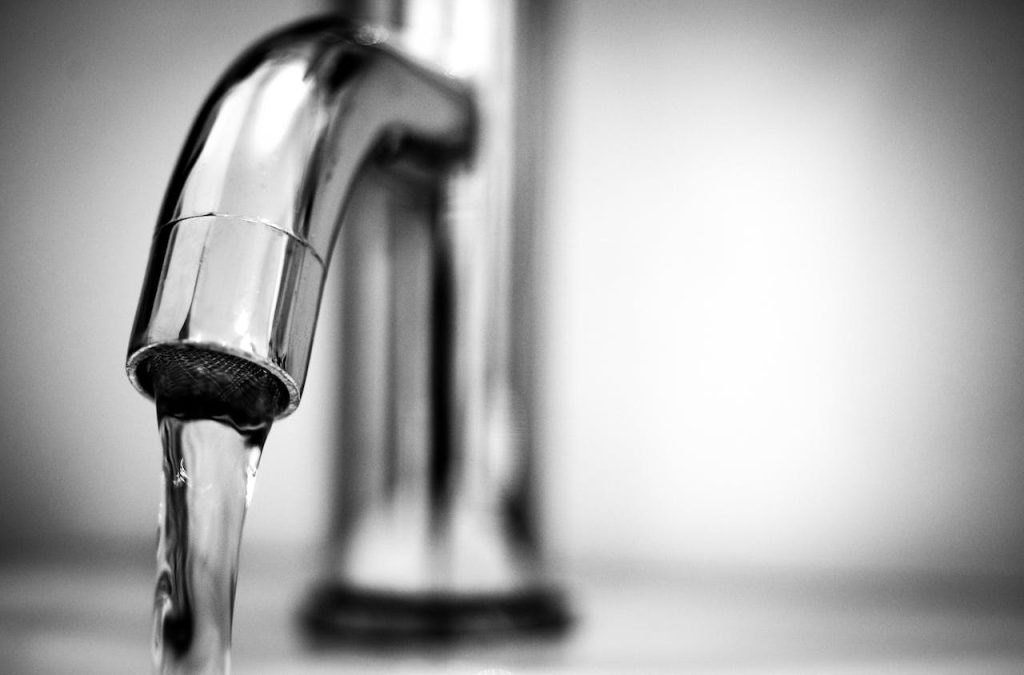Looking to boost your water pressure at home? Wondering how to choose the best solution for low water pressure? From shower heads to whole-house systems, finding the right fix can be overwhelming. What factors should you consider when selecting the ultimate solution for your low water pressure woes? In this comprehensive guide, we break down everything you need to know to make an informed decision. Say goodbye to weak water flow and hello to strong, consistent pressure throughout your home.
Table of Contents
ToggleIdentifying Low Water Pressure Causes
Clogged Pipes and Faucets
Clogged pipes and faucets are common low water pressure issues caused by mineral deposits and debris accumulation. Clearing mineral buildup is crucial to restore water flow effectively. Removing debris from faucets can significantly improve water pressure at home. For severe clogs, seeking professional assistance is advisable to ensure complete resolution.
Municipal Supply Issues
Low water pressure situations due to municipal supply problems require proactive steps. Contacting local authorities to report communal water pressure issues is essential for swift resolution. Collaborating with neighbors can help address shared supply problems collectively. Keeping track of local news updates regarding municipal water pressure changes is crucial for staying informed and prepared.
Aging Plumbing
Aging plumbing systems contribute to low home water pressure over time. To combat this, replacing corroded pipes is necessary to enhance water pressure throughout the house. Upgrading old plumbing fixtures can significantly improve performance and increase water pressure levels. Scheduling regular maintenance checks is vital in preventing a decline in water pressure due to aging plumbing components.
Testing Water Pressure
Using Pressure Gauges
- Measure water pressure accurately with a water pressure gauge to obtain precise readings.
- Compare the recorded pressure levels to standard values for a comprehensive assessment.
- Identify any pressure fluctuations across different areas of the house to pinpoint specific issues.
Flow Rate Tests
- Conduct flow rate tests to pinpoint any pressure restrictions within the plumbing system.
- Evaluate the consistency of water flow across various fixtures like sinks, showers, and faucets.
- Utilize the test results to determine the necessary adjustments required to optimize water pressure.
Leak and Blockage Checks
- Inspect both visible and hidden areas for any potential leaks that could be causing low water pressure.
- Clear any blockages present in the pipes to restore optimal water flow throughout the house.
- Addressing both leaks and blockages simultaneously is crucial for comprehensive solutions to low water pressure problems.
Inspecting Plumbing
Fixtures and Valves
Regular cleaning of fixtures is crucial to prevent mineral buildup, which can contribute to low water pressure. Over time, minerals like calcium and magnesium can accumulate in fixtures, restricting water flow. By cleaning them frequently, you can maintain optimal water pressure.
Testing valves is essential to ensure they operate smoothly and regulate pressure effectively. If valves are not functioning correctly, it can lead to fluctuations in water pressure throughout your plumbing system. By regularly testing them, you can identify any issues early on.
When dealing with low water pressure, it’s important to check for faulty fixtures and valves. If you notice any leaks or malfunctions, it’s advisable to replace them promptly. Faulty fixtures and valves can significantly impact water flow and overall pressure regulation in your plumbing system.
Pipe Connections
Inspecting pipe joints for leaks and loose connections is vital in addressing low water pressure. Leaks in pipe joints can result in water loss and decreased pressure throughout the system. By checking for leaks regularly, you can prevent further damage.
Tightening fittings is a simple yet effective way to eliminate pressure loss in your plumbing system. Loose fittings can cause leaks and reduce water pressure in various areas of your home. Ensuring all fittings are securely tightened can help maintain consistent water pressure.
To prevent temperature-related pressure issues, it’s advisable to insulate exposed pipes. Extreme temperatures can affect water pressure by causing expansion or contraction of pipes. By insulating exposed pipes, you can minimize the impact of temperature changes on your plumbing system.
Boosting Water Pressure
Choosing Pressure Boosters
When improving water pressure, assess various booster pump capacities to match your requirements. Opt for energy-efficient models to cut down on utility expenses. Ensure the chosen booster pump is compatible with your current plumbing setup.
Installation Tips
For a good water pressure outcome, enlist professionals for safe booster pump installation. Adhere strictly to the manufacturer’s instructions for accurate pump positioning. Guarantee proper electrical connections to prevent operational issues.
Avoiding Plumbing Damage
To maintain adequate water flow, install boosters correctly to avert potential damage. Regularly check for leaks after installation to prevent long-term plumbing complications. Utilize quality materials during installation to protect your plumbing system.
Troubleshooting and Fixes
Flushing Pipes
Flushing pipes is crucial to remove sediment buildup that can cause low water pressure. This simple maintenance task helps in preventing low pressure issues by ensuring smooth water flow. Include pipe flushing in regular maintenance schedules to maintain optimal water pressure levels.
Detecting Leaks
Utilize leak detection tools to identify hidden leaks that could be causing low water pressure. Promptly addressing leaks is essential to prevent further pressure loss and maintain adequate water flow. Keep an eye on your water bills for sudden increases, as this could be a sign of undetected leaks affecting your water pressure.
Upgrading Components
Consider upgrading outdated fixtures to improve water pressure throughout your property. Investing in high-quality components ensures long-lasting solutions for low water pressure problems. Consult with professionals to get recommendations on the most suitable component upgrades based on your specific water pressure needs.
Choosing Solutions
Seek Expert Advice
When dealing with low water pressure, seeking expert advice is crucial. Professionals can assess the issue accurately.
Consulting a plumber can help identify the root cause of the problem. They can recommend tailored solutions based on your specific situation.
It’s essential to hire a reputable and experienced professional to ensure the correct diagnosis and effective resolution.
Consider Long-Term Benefits
When deciding on a solution for low water pressure, considering long-term benefits is key. Opt for solutions that offer lasting improvements.
Investing in high-quality products may require a higher initial cost but can result in better performance and durability over time.
Look for solutions that are energy-efficient to save on utility bills in the long run while improving water pressure effectively.

Compare Multiple Solutions
Before finalizing a decision, compare multiple solutions to determine the most suitable one for your needs. Evaluate the pros and cons of each option.
Creating a list of potential solutions can help you make an informed choice. Research different methods available in the market.
Consider factors such as cost, effectiveness, maintenance requirements, and compatibility with your existing plumbing system.
FAQs
Recognizing Low Pressure
- Notice signs such as slow water flow or weak shower pressure to identify low water pressure issues.
- Keep track of pressure changes over minutes to catch any gradual declines in water pressure.
- Take immediate action upon noticing any decrease in water pressure to prevent further complications.
DIY Pressure Increase
- Implement DIY methods like cleaning aerators, checking for leaks, and adjusting pressure regulators to boost water pressure.
- Explore online tutorials that offer step-by-step guidance on enhancing water pressure using simple tools.
- Utilize DIY solutions as temporary measures until professional assistance is available for a long-term fix.
Additional Causes
- Investigate less common causes such as faulty pressure regulators or sediment buildup in pipes leading to low water pressure.
- Consider environmental factors like temperature changes or pipe corrosion that can impact water pressure levels.
- Seek advice from professionals to accurately identify rare pressure issues and determine suitable solutions.
Booster Noise Levels
- Research the noise levels of various booster pump models to select one with minimal disruption.
- Opt for a quiet booster pump to avoid disturbances caused by loud operational noises.
- Install noise-reducing features like vibration pads or insulated enclosures to mitigate booster pump sounds effectively.
Fixing Costs
- Estimate the costs associated with repairing low water pressure issues, including materials and labor expenses.
- Compare prices for different solutions, such as installing a booster pump or replacing old pipes, to find the most cost-effective options.
- Budget for regular maintenance and potential upgrades to your water system to prevent future pressure problems and ensure optimal performance.
Final Remarks
You’ve now learned how to identify, test, inspect, and troubleshoot low water pressure issues. By understanding the causes and solutions outlined in this guide, you’re equipped to make informed decisions to boost your water pressure effectively and efficiently. Remember to consider factors like cost, complexity, and long-term maintenance when choosing the best solution for your specific situation.
Take action today and implement the strategies discussed to enhance your water pressure. Whether it’s fixing leaks, installing a pressure booster, or seeking professional help, addressing low water pressure promptly can significantly improve your daily water usage experience. Don’t let low water pressure inconvenience you any longer – empower yourself with the knowledge gained from this guide and enjoy optimal water flow in your home.
Experience Excellence in Low Water Pressure Solutions with Garcia Home Restoration!
We recognize the frustrations homeowners face when grappling with low water pressure in their plumbing systems. At Garcia Home Restoration, our proactive team of licensed experts leads the way in delivering exceptional low water pressure solutions that guarantee reliability and efficiency.
We don’t just react to plumbing issues; we prevent them. Garcia Home Restoration offers comprehensive home maintenance solutions to keep your systems running smoothly. Our reputation in Contra Costa County is built on unwavering quality, unmatched expertise, and the trust of numerous satisfied clients. Don’t settle for less when it comes to your home’s functionality and cleanliness. Contact us today for proactive low water pressure services and enjoy a worry-free plumbing future!




